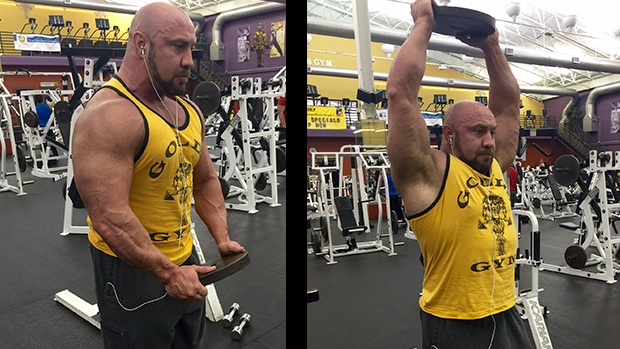In the 1975 film classic, "Three Days of the Condor," a CIA analyst played by Robert Redford discovers there's a secret CIA within the CIA that's plotting to invade the Middle East. The secret CIA doesn't react kindly to his meddling so they hire an assassin to kill Redford ("Condor").
At the film's conclusion, Condor tries to protect himself and democracy by telling his story to The New York Times in the hopes they'll print it and expose the plan. When Condor tells J. Higgins – his bureau chief (played by Cliff Robertson) and unwitting accomplice of the renegade CIA branch – that he's exposed their plot to the world, Higgins shakes his head and mutters, "You dumb son of a bitch. You've done more damage than you know."
Well, despite my respect and affection for scientist and T Nation contributor Brad Schoenfeld, that's kinda/sorta what I feel like telling him for revealing the results of a recent study he and his colleagues conducted.
I've no doubt Schoenfeld and his colleagues had good intentions, but when their study revealed that lifters could build strength and size by doing just one set of seven common exercises – in effect completing a workout in 13 minutes – they "done more damage than they know."
It was this number 13 that caused the media to glom onto the study, recognizing that it would be catnippy to lazy bastards everywhere. Sure enough, reluctant exercisers are already extrapolating mightily, wrongly concluding that they could do a 13-minute workout and reap all the potential benefits of weightlifting, including strength, size, cardiovascular fitness, etc., even though Schoenfeld and his group said nothing of the kind.
The study had noble intentions. They recruited 34 fit young men who were recreationally weight trained and split them into three groups. Each trainee had his 1RM strength in the squat and bench press measured, along with his upper-body endurance (how many reps of bench press he could do with 50% of their 1RM).
Each subject was then tasked with a basic 8-week exercise program consisting of 7 different exercises, including bench press, lateral pull-down, machine leg press, and other basic movements. Each set was 8-12 reps, but every set had to be performed to failure.
Here's the rub, though:
- One group did 5 sets of each exercise, which took about 70 minutes.
- The second group did 3 sets of each exercise in a workout that lasted about 40 minutes.
- The third group only did 1 set of each exercise and were out of the gym in 13 minutes, presumably allowing them to take advantage of the 15-minute parking space grace period.
After two months, all of the groups gained essentially the same amount of strength and endurance. It didn't matter if they did 1 set, 3 sets, or 5, the results were pretty much the same.
Despite the parity in strength and endurance between all three groups, only the 5-sets per exercise group experienced significant increases in muscle size.
Schoenfeld felt the study emphasized the importance, or value, of working the muscle to failure. "A lot of people probably do not push themselves that much," he suggested.
(We will pause briefly to let those people who weren't aware of the inherent laziness of humans to catch up.)
If you're an experienced lifter, this study probably won't mean anything to you. After all, no one's saying that a 13-minute weight-training workout is going to build substantial muscle in either novice or experienced lifters, even if every set is done to failure. Neither is it likely to build substantial strength in anyone but the novice lifter, providing he hasn't been completely half-assing it in the gym.
In fact, 1-set workouts won't do any of the other things people train for, like improving athletic performance, increasing cardiovascular health or efficiency, or building purty glutes that are so prominent, they knock all the porcelain figurines off the shelf whenever you haphazardly turn around at Bed, Bath, and Beyond.
All it's saying is that lazy schlubs who won't spend an hour or even a half hour in the gym can build a little strength if they commit to short workouts consisting of 1 set per exercise, each done to failure.
To be fair, maybe this study will spur some reluctant exercisers to venture into the gym before work or during lunchtime to grab a quick workout, which is better than no workout at all.
- Schoenfeld BJ et al. Resistance Training Volume Enhances Muscle Hypertrophy. Med Sci Sports Exerc. 2019 Jan;51(1):94-103. PMC.





